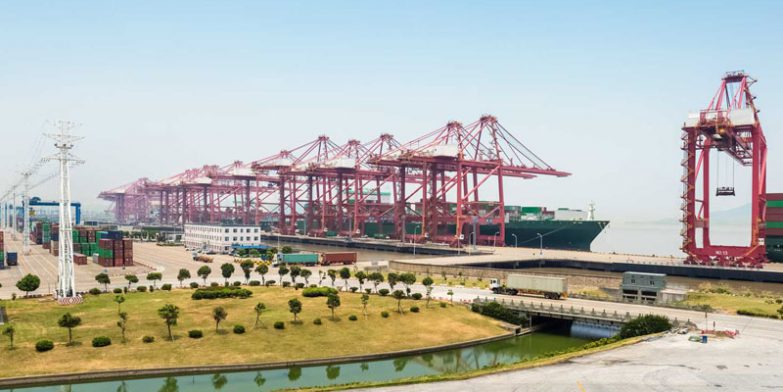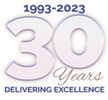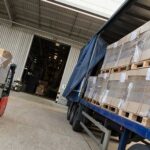
Two weeks since Ningbo container terminals closed after a worker tested positive for COVID-19 and port congestion has spread across China and Asia, while easing in Europe.
The lessening of pressure in Europe reflects the lag between departure and arrival of vessels, which means we may begin to see impacts in coming weeks, as delayed vessels begin to arrive.
There are currently 48 container ships waiting outside Ningbon, with 65% of vessels waiting, versus those actually being worked in port.
Shanghai waiting time is inching upwards, at 52%, and Yantian 68%, Hong Kong 55% and Shekou/Chiwan 67% are also on an upwards trend. Busan, which is usually quite low, is now at 70%, with 14 vessels waiting outside.
The average number of weekly port calls to Ningbo fell 22% from 188 container vessels to 146 in the first week of closure, but the total vessel capacity calling at the port only dropped 7.8%, because the other four terminals at the port absorbed the inbound and outbound container traffic redirected from Meishan.
Outside of east Asia, there has yet to be a major spill over from the Ningbo closure into other Asian ports. The port authority in Ningbo is slowly implementing a reopening of its Meishan terminal, a facility which accounts for around 20% of the approximate 30m teu that pass through the port annually.
Throughput will be increased in phases to reduce the backlog of containers, with resumption of container gate operations due to start yesterday and a full reopening scheduled for the 1st September. This will take time to filter through into carrier schedules and reliability and will not be an immediate ‘fix’.
Chinese authorities have been stringent with COVID testing. Many ports are requiring nasal swab tests for crews, forcing vessels to remain outside the harbour until negative results are confirmed. And many ports are requiring vessels to quarantine for two to four weeks if they were previously berthed in India, where the delta variant surged during the summer and continues to have an impact throughout Asia.
The risk of a coronavirus outbreak at Chittagong port is rising as the presence of the deadly virus was detected in the crews of two vessels in the last week and a crew member of the 11,000TEU YM TRAVEL, tested positive for COVID-19, resulting to schedule delays for its transpacific service.
India’s worst-ever sea freight capacity crunch has led to skyrocketing freight rates and a sold-out spot market to Oceania, West Africa, North and South America, as well as Europe. Carriers have announced a number of general rate increases and peak season surcharges (PSSs) which have seen freight rates double since July.
Retailers and other importers are increasingly trying to switch from ocean to air transport to make up for huge production slowdowns in Vietnam due to COVID-19, with air freight rates rapidly escalating because of the spike in demand.
The shift to air follows the Vietnamese authorities response to rising numbers of COVID-19 cases in the south, in extending by a month stringent controls on movement that have crippled factory production and sharply reduced freight activity at ports and airports. Many factories remain closed.
COVID-19 is also affecting Cambodia, which is complicating land-air shipments via Saigon and Bangkok. The rate from Thailand’s capital has more than doubled from pre-pandemic norms.
Our commercial and operations teams work closely with colleagues across Asia and while we expect the situation in Ningbo and surrounding ports will improve, as Meidong reopens properly, we will continue to assess its impact on a shipment by shipment basis.





